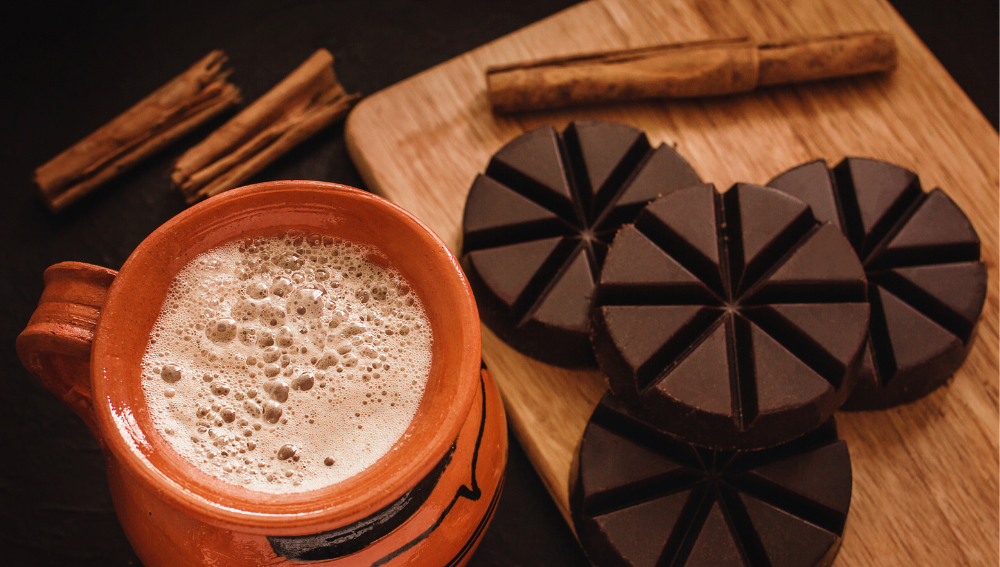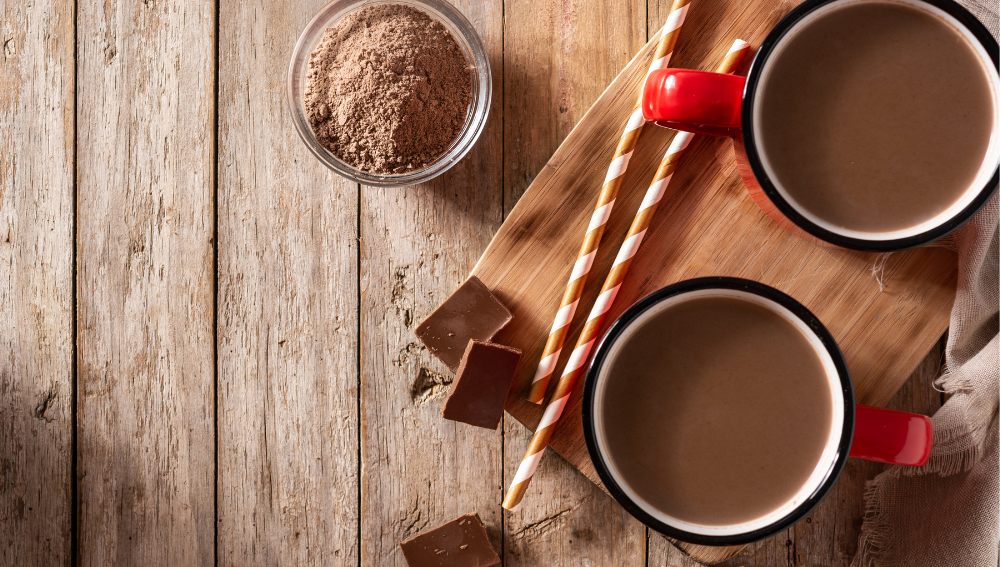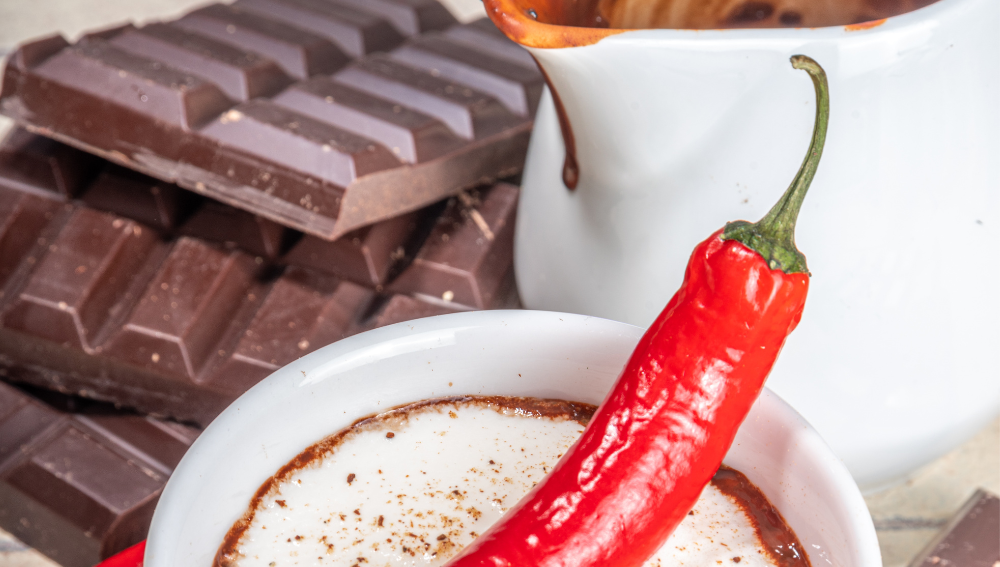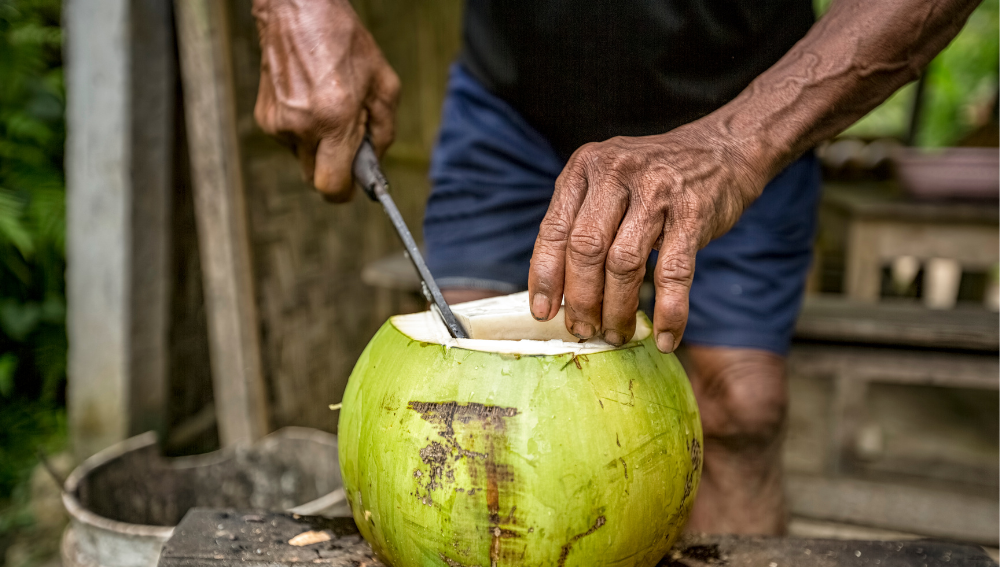Mexican chocolate is a unique and versatile ingredient, famous for its rich flavor and grainy texture. It is widely used in traditional Mexican cuisine, particularly in mole sauces and hot chocolate.
However, there might be instances when Mexican chocolate is unavailable, or you’re looking for a healthier alternative. In such cases, finding a suitable substitute can make all the difference in recreating the desired flavor profile.
Several factors dictate the choice of Mexican chocolate substitutes, such as your personal taste preferences, the recipe requirements, and the availability of ingredients.
Understanding the key components of Mexican chocolate, as well as its common uses, is essential to choose a substitute that will complement your dish.
With numerous options to explore, discovering a Mexican chocolate substitute that works best for you can add an exciting twist to your culinary adventures.
Key Takeaways
- Choosing a substitute depends on taste, recipe, and ingredient availability
- Understanding Mexican chocolate components is crucial for a successful substitution
- Explore various options to find the perfect alternative for your culinary creations
Understanding Mexican Chocolate

Mexican chocolate, or “ate,” has a unique history and tradition that dates back to Mesoamerica. The Aztecs were the first to create chocolate beverages with a specific preparation method.
They would grind the cacao beans on a metate, a traditional stone tool used for grinding ingredients. The cacao paste would then be mixed with water and spices, resulting in a frothy and slightly bitter beverage.
Today, the process of making Mexican chocolate has evolved, but some techniques still remain true to their origins. In Oaxaca, a famous region for chocolate production in Mexico, metates have been replaced with a modern version called molino.
A molino is a machine that grinds cacao beans and creates a smoother paste. Although the grinding method has changed, the bitter flavor characteristic of Mexican chocolate still remains intact.
One distinctive element of Mexican chocolate is the use of a molinillo, a wooden whisk. The molinillo is used to create a frothy texture in the chocolate, offering an unforgettable experience when consumed as a drink.
In combination with the bitterness of the cacao, this frothy texture adds an indulgent dimension to the traditional beverage.
Unlike typical chocolate products, Mexican chocolate contains less cocoa butter, which results in a more grainy and less creamy texture.
The chocolate often has additional ingredients like cinnamon, sugar, and sometimes even ground nuts, providing a unique taste and texture. These differences make Mexican chocolate a distinct and essential part of Mexican cuisine and culture.
In summary, understanding Mexican chocolate involves appreciating its rich history, traditional preparation methods, and unique flavor profile.
From its roots in Mesoamerica to the modern preparation techniques in Oaxaca, Mexican chocolate offers a uniquely indulgent experience that sets it apart from other chocolate varieties.
The Importance of Ingredients in Mexican Chocolate
Mexican chocolate is a unique and flavorful treat, known for its distinctive and rich taste. A crucial factor contributing to this delightful taste is the combination and quality of ingredients used.
When looking for a substitute, it is essential to consider the ingredients that contribute to Mexican chocolate’s authentic flavor.
Cocoa is the primary ingredient in Mexican chocolate, often sourced from high-quality cacao beans. Cacao beans come from the Theobroma cacao tree and provide the chocolate with its characteristic bitterness and earthy notes.
To replicate the essence of Mexican chocolate, it is crucial to choose a cocoa base that offers similar taste profiles.
Cinnamon plays a significant role in defining the taste of Mexican chocolate. This warm and fragrant spice adds a subtle yet recognizable touch to the chocolate’s overall flavor.
When searching for a suitable substitute, the presence of cinnamon is indispensable for an authentic experience.
In addition to cocoa and cinnamon, sugar is an essential component in Mexican chocolate. While the chocolate itself can be quite bitter due to the cocoa, sugar adds the necessary sweetness to balance the flavor profile.
A good substitute should also contain the right balance of sweetness.
Mexican chocolate often incorporates nuts such as almonds to add texture and depth to the taste. The inclusion of nuts gives the chocolate its unique, crunchy texture and enriches its overall flavor.
Ideal substitutes should factor in this dimension by including almonds or similar nuts.
Lastly, some varieties of Mexican chocolate also include chiles in their ingredient list. The chiles lend a subtle heat and complexity to the chocolate, setting it apart from other varieties.
While chiles may not be present in all Mexican chocolate, an alternative that includes them can evoke a more authentic taste.
In conclusion, the ingredients present in Mexican chocolate play a critical role in its distinctive flavor. When searching for a suitable substitute, it is vital to consider the combinations and quality of ingredients such as cocoa, cinnamon, sugar, nuts, and chiles to ensure a similar taste experience.
Common Uses of Mexican Chocolate

Mexican chocolate has a unique flavor profile that sets it apart from regular chocolate, making it a popular ingredient in various recipes.
One of the most traditional uses for Mexican chocolate is in mole, a rich and complex sauce that is indispensable in Mexican cuisine.
Mole sauce combines the deep flavors of chocolate with various spices and chiles, creating a versatile accompaniment for chicken, beef, and vegetables.
Another common usage for Mexican chocolate is in hot chocolate. The traditional Mexican hot chocolate is called “Chocolate Caliente” and is made from scratch using chocolate tablets.
These chocolate tablets are mixed with hot milk or water, cinnamon, and sometimes a touch of chili powder for an added kick. The result is a rich, frothy, and slightly spiced beverage that warms the soul on cold nights.
Mexican chocolate can also be found in a wide range of desserts. Classic Mexican desserts such as flan and chocolate bars often feature the unique flavor of Mexican chocolate, giving them a delightful twist.
The distinct taste of Mexican chocolate, with its hints of cinnamon and nutmeg, adds a depth and warmth to desserts that are difficult to replicate with other types of chocolate.
In addition to mole, hot chocolate, and desserts, Mexican chocolate can also be used in numerous other recipes. Its versatile flavor profile enables it to be incorporated into various dishes, both sweet and savory.
Some innovative recipes call for Mexican chocolate to be used in drinks, marinades, and upscale appetizers. For example, it can be melted and drizzled over fruits, mixed into savory sauces, or even added to chili for a unique flavor twist.
In summary, Mexican chocolate is a versatile ingredient that can be used in a range of recipes, including mole sauce, hot chocolate, desserts, and other dishes, all contributing to its ever-growing popularity in the culinary world.
Mexican Chocolate Substitutes
Mexican chocolate is known for its distinctive flavor profile, combining cocoa with cinnamon and other spices. When it’s not available, you can consider these substitutes to retain the essence of Mexican chocolate in your recipes.
Chocolate Based Substitutes
1. Dark Chocolate with Cinnamon: Combine dark chocolate (preferably 70% cacao) with a pinch of ground cinnamon to mimic the taste of Mexican chocolate.
Measure the cinnamon according to your taste preferences. This substitute works best when the recipe involves melting the chocolate.
| Ingredient | Amount |
|---|---|
| Dark Chocolate | As needed |
| Ground Cinnamon | As per taste |
2. Chocolate Chips with Cinnamon: Similar to the dark chocolate option, you can use chocolate chips with added cinnamon.
This substitute can be used for recipes requiring the chocolate to stay in solid form, such as cookies or baked goods.
| Ingredient | Amount |
|---|---|
| Chocolate Chips | As needed |
| Ground Cinnamon | As per taste |
3. Bittersweet Chocolate: Bittersweet chocolate, made with a mix of cocoa and sugar, can be an effective substitute for Mexican chocolate.
However, it lacks the cinnamon flavor, so you may want to add a hint of cinnamon to achieve a similar flavor.
| Ingredient | Amount |
|---|---|
| Bittersweet Chocolate | As needed |
Non-Chocolate Based Substitutes
1. Cocoa Powder with Cinnamon: If you don’t have any chocolate on hand, unsweetened cocoa powder can work as a substitute.
Combine cocoa powder with sugar to get the sweetness you desire and add ground cinnamon to achieve the Mexican chocolate flavor.
| Ingredient | Amount |
|---|---|
| Unsweetened Cocoa Powder | As needed |
| Ground Cinnamon | As per taste |
| Sugar | As per taste |
2. Dutch-Process Cocoa: Dutch-process cocoa is often used as a substitute for cocoa powder in recipes. However, this option will result in a milder flavor, making it less appropriate for those seeking an authentic Mexican chocolate taste.
To compensate for the reduced flavor intensity, consider adding extra cinnamon to your recipe.
| Ingredient | Amount |
|---|---|
| Dutch-Process Cocoa | As needed |
| Ground Cinnamon | As per taste |
When using these substitutes, keep in mind that they may not perfectly replicate the unique taste of Mexican chocolate.
However, they can still provide a satisfying alternative when Mexican chocolate is unavailable. Choose the option that works best for your recipe and personal preferences.
Factors Affecting Substitute Selection

When considering a substitute for Mexican chocolate, various factors come into play. One of the primary concerns is flavor.
Mexican chocolate has a distinct taste, characterized by its rich, earthy notes and the presence of spices such as cinnamon and cayenne pepper.
Finding a suitable replacement means identifying ingredients that can deliver a similar sensory experience.
Texture and mouthfeel also play a significant role in selecting a substitute. Mexican chocolate possesses a unique grainy texture that can be either smooth or slightly coarse.
As you experiment with alternatives, look for options that can mimic this texture. It is crucial not only for enjoying the chocolate on its own but also for ensuring even distribution in recipes.
Examine the ingredients carefully to see how they may contribute to taste and texture. Mexican chocolate typically contains varying ratios of cacao, sugar, cinnamon, and sometimes almond paste.
Substitutes should offer a flavor experience that can mimic the balance of these elements while staying true to the essence of Mexican chocolate. If you’re vegan or have concerns about lactose, pay extra attention to whether any milk-based ingredients are included.
Remember to account for the type of seasoning a substitute includes. Mexican chocolate often adds spices such as cinnamon or nutmeg to create distinctive flavor profiles.
Spicy elements, like the classic combination of cacao and cayenne pepper, can work well in certain dishes.
If you can’t find a suitable replacement with these spices, you can always add them separately to achieve the desired result.
Consider how the chocolate substitute will perform in various applications, such as baking or preparing hot beverages. Different chocolate types might require adjustments in the mix and water content, potentially affecting the final result.
It might be helpful to test the substitute in a few recipes, especially if it has a different fat content. This way, you can perfect the balance of ingredients and achieve desired outcomes.
In summary, choosing a Mexican chocolate substitute involves evaluating factors like flavor, texture, ingredients, spices, and how the replacement behaves in various culinary situations.
By keeping all these aspects in mind, you can confidently select a substitute that honors the original’s unique characteristics.
Practical Tips for Substitution
When looking for a suitable Mexican chocolate substitute, it’s essential to consider the ingredients and flavors that will best replicate the original taste.
Here are some practical tips for substitution that will help you create a satisfying result while staying true to the recipe.
Start by checking your pantry for ingredients that can mimic the flavors of Mexican chocolate. Mexican chocolate typically has a distinct taste, combining sweetness, bitterness, and subtle spice.
If you already have chocolate in your pantry, consider using it alongside additional spices to create a similar flavor profile.
One option is to melt 1 cup of semi-sweet chocolate chips and add the appropriate spices. Mix in 3 tablespoons of granulated sugar, ½ teaspoon of ground cinnamon, and a pinch of chili powder or cayenne pepper. This combination will create a flavor profile closely resembling Mexican chocolate.
If you’re creating a hot chocolate or beverage, another route is to begin with unsweetened cocoa powder and season it with spices.
Combine 1 cup of unsweetened cocoa powder, ¾ cup of granulated sugar, ½ teaspoon of ground cinnamon, and a pinch of chili powder or cayenne pepper.
Dissolve this mixture in hot milk or water to create a warm, spiced beverage reminiscent of Mexican hot chocolate.
Don’t be afraid to adapt the recipe based on your taste preferences or the preferences of your friends and family. Feel free to adjust the sugar and spice levels to suit everyone’s liking.
If unsure, start with a smaller amount of spice and gradually increase until the desired taste is achieved.
Lastly, don’t forget about the presentation. A sprinkle of cinnamon, chili powder, or cayenne pepper on top of your final creation can add an extra touch of authenticity and enhance the overall experience of enjoying a Mexican chocolate substitute.
With these tips in mind, you can confidently and knowledgeably create a delicious substitute for Mexican chocolate using readily available ingredients in your pantry.
Always remember to experiment with flavors and adjust the recipe to suit your tastes, ensuring a satisfying and enjoyable experience for all.
Nutritional Considerations
When looking for the best Mexican chocolate substitute, it is essential to consider the nutritional aspects to make a healthy choice. Mexican chocolate typically contains cocoa, sugar, and cinnamon, and it can be used in various recipes.
Substituting this ingredient with other options may lead to changes in nutritional values, particularly in calories and sugar content.
Cocoa Powder: This is a popular substitute for Mexican chocolate due to its natural cocoa flavor and low calorie count. Unsweetened cocoa powder contains only around 12 calories per tablespoon and is virtually free of sugar.
By adding cinnamon to the cocoa powder, one can replicate the signature taste of Mexican chocolate while maintaining a lower calorie count and sugar content.
Dark Chocolate: Another common alternative to Mexican chocolate is dark chocolate. It usually has a higher cocoa percentage and lower sugar content compared to milk or white chocolate.
While dark chocolate may have more calories than cocoa powder, it can provide additional nutrition benefits, such as antioxidants and minerals like magnesium or iron.
Carob Powder: For those looking for a healthier substitute that is low in calories, carob powder might be a suitable option. Carob powder is derived from the pulp of the carob tree and has a sweet, slightly nutty taste.
With around 25 calories per tablespoon, carob powder has fewer calories than dark chocolate but more than cocoa powder. Also, it is naturally lower in fat and sugar, making it a healthy alternative.
To control the sugar content when using any of these substitutes, it is possible to adjust the amount of granulated sugar added to recipes.
For example, when using unsweetened cocoa powder, one can use less sugar or opt for a natural, low-calorie sweetener.
Alternatively, when using dark chocolate or carob powder that already contains sugar, one can reduce the amount of added sugar to the recipe accordingly.
In conclusion, there are various Mexican chocolate substitutes available, each with different nutritional profiles.
It is crucial to examine the calorie count, sugar content, and nutritional benefits of each option to make an informed decision and maintain a healthy, balanced diet while still enjoying the desired flavors.
Exploring Unconventional Substitutes
When seeking an alternative to traditional Mexican chocolate, carob powder and cacao nibs are two unconventional substitutes worth considering.
Both ingredients offer unique characteristics that can impart the desired taste and texture to your recipes.
Carob powder, derived from the carob tree, is a naturally sweet and caffeine-free alternative. It shares a similar flavor profile with cocoa, making it a viable option for those looking to mimic the distinctive taste of Mexican chocolate.
To achieve the desired sweetness, carob powder may be used in equal proportions as cocoa powder in recipes. It’s also worth noting that carob has been used for its medicinal properties since ancient times.
Cacao nibs, on the other hand, are small pieces of crushed cacao beans and provide a more bitter and intense chocolate-like flavor.
Many farmers prefer using cacao nibs as they offer a convenient option for introducing an authentic chocolate taste without the added sugars.
These nibs can be stored in a refrigerator to maintain their freshness and can be ground into a powder, similar to cocoa, making it an ideal substitute.
For those who want to capture the essence of Mexican chocolate, it’s essential not to overlook the importance of spices. The addition of chilies to your substitute can elevate the flavor profile, creating that signature warmth found in traditional Mexican chocolate.
It’s important to mention that the process of making chocolate, such as conching and incorporating other ingredients like sugar and liquor, also influences the final taste. When experimenting with unconventional substitutes, be mindful of these processes to ensure a satisfying result.
One recommendation is to use a disc or log shape to mimic the form of authentic Mexican chocolate tablets.
In conclusion, both carob powder and cacao nibs offer unique elements that make them suitable substitutes for Mexican chocolate.
By combining these ingredients with additional spices, such as chilies, and understanding the various production processes, you can create an unconventional alternative to suit your taste preferences.
Frequently Asked Questions
What are the top alternatives to traditional Mexican chocolate?
There are several alternatives to traditional Mexican chocolate that can be used in recipes. Some of the top options include:
- Ibarra or Abuelita chocolate tablets: These are popular Mexican chocolate brands that closely resemble traditional Mexican chocolate taste and texture.
- Semi-sweet chocolate combined with cinnamon and a touch of chili powder: This mixture can help replicate the distinct flavor of Mexican chocolate.
- Bittersweet or dark chocolate mixed with ground cinnamon, vanilla extract, and a hint of ground chile pepper: This combination can also work as a substitute for traditional Mexican chocolate.
How can I make my own Mexican chocolate substitute at home?
To make your own Mexican chocolate substitute at home, start with a high-quality base chocolate such as bittersweet, dark or semi-sweet. Melt the chocolate gently over a double boiler or in the microwave.
Once melted, add ground cinnamon, a touch of ground chili or cayenne pepper, and a splash of vanilla extract. Mix until well combined and smooth. Allow the mixture to cool slightly before using it in your recipes.
Which ingredients should I focus on for replicating the flavor of Mexican chocolate?
The main ingredients to focus on when replicating the flavor of Mexican chocolate are:
- Chocolate: Use a high-quality semi-sweet, bittersweet, or dark chocolate as the base.
- Ground cinnamon: This warm spice is an essential flavor in Mexican chocolate.
- Ground chili or cayenne pepper: A touch of heat complements the sweetness of the chocolate and cinnamon.
- Vanilla extract: A hint of vanilla adds depth and complexity to the flavor.
What type of chocolate can I use as a base for mole sauce?
For mole sauce, it is best to use a darker chocolate, especially one with a high cacao content. Bittersweet or dark chocolate are recommended, as they will provide a better balance to the other rich and savory flavors present in a mole sauce.
Are there any specific brands that closely resemble Mexican chocolate?
Yes, there are a few brands that produce chocolate tablets specifically designed to resemble traditional Mexican chocolate. Some popular options include Ibarra, Abuelita, and Taza Chocolate.
These brands offer authentic Mexican chocolate flavors and can be found in many grocery stores or online retailers.
What sets Mexican chocolate apart from other chocolates in terms of taste and texture?
Mexican chocolate is unique in its taste and texture due to the addition of aromatic spices like cinnamon and a hint of chili pepper. This combination of flavors gives Mexican chocolate a warm, complex taste that sets it apart from other types of chocolate.
Additionally, traditional Mexican chocolate is often made with coarser sugar and has a more granular texture compared to the smoothness found in other chocolates.







